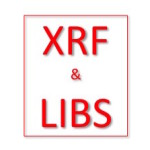XRF and LIBS Technologies surpass XRT in metal recycling applications
June 25, 2016
XRF and LIBS Technologies surpass XRT in metal recycling applications in terms of cost efficiency and technical advantages
In the recent past, sorting Aluminum alloys by means of XRT (X-ray-Transmission) technology has been tried. However, this expensive sensor technology (based on the physical property of material density) is not precise enough for specific alloy sorting. Additionally, extra material preparation stages like sizing for XRT sorting is costly and time consuming. Sorting with XRT has demonstrated to be cost inefficient and yielding poor product quality when used beyond the stage of rough sorting light and heavy metal alloys commonly found in shredder scrap.
XRT sorting technologies alone are not good enough for most aluminum recycling applications. Chemistry is the key.
The scrap processor to scrap consumer business link is therefore in need of a better bridge by which they may conduct their trade. In the Sense2Sort model, the XRT approach is thus followed by XRF (X-Ray Fluorescence) technique. Using the XRF sensor technology, aluminum alloys can be classified cost efficiently, at a high quality, and at an economically viable throughput performance. Different than XRT, which results merely in black white imaging as sorting criteria, XRF sensing allows the definition of plain material composition according to the atomic elements table. XRF, and its partner technology in Sense2Sort’s first-of-its-kind scrap metal processing line, LIBS, are elemental analyzers that use the chemistry of the target material for identifying or sorting criteria. For example, the XRF technology has proven usage for the scrap metal processors in sorting their Zorba und Zurik. XRF extracts Zn, Cu, Ni, Fe, etc., from the Zorba; and extract only PCB’s or Cu from Zurik material.
Is this interesting for you? Are you coming to IFAT? Let us meet and discuss your sorting opportunities.Please contact at info@sense2sort.com




